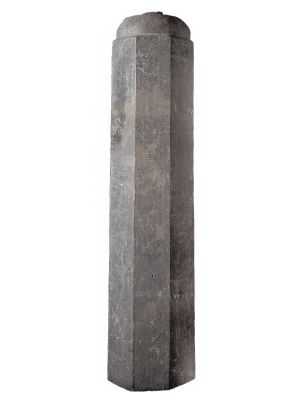Sutra pillars introduction
Sutra pillars are polygonal stone pillars and are mostly quadrangular, hexagonal, octagonal, and even hexadecagonal, one example of which is the Tang-dynasty stone pillar at the Kaiyuan temple in Hebei, China. In addition, there are also round-shaped pillars, such as the drum-shaped sutra pillar in Shaanxi, China. A
sutra pillar is typically comprised of three parts: a base, a body, and a spire. The height of the pillar depends on the structure adopted. When sutra pillars first appeared in the Tang dynasty, they are single-tiered with a height of not more than three meters. Sutra pillars are mostly octagonal and engraved with
the Usnisavijaya Dharani Sutra. The fad of building sutra pillars]] continued from the mid-Tang dynasty to the Five Dynasties, as well as the Liao and Jin dynasties, especially in the northern territories, where it spread to Korea and Japan.
History
The Usnisavijaya Dharani Sutra was widespread during the Tang dynasty and narrates how the Buddha saved Susthita, a heavenly being, from being reborn in the lower realms. The Sutra shows three main themes: removal of karmic obstacles, elimination of disasters and calamities, and increase of one's blessings and
longevity. In the year 776, Emperor Daizong issued an edict, instructing monastics nationwide to chant the Usnisavijaya Dharani Sutra 21 times daily. The sutra thus gained its popularity and boosted the construction of sutra pillars.
This octagonal sutra pillar was inscribed neatly with the text of the Usnisavijaya Dharani Sutra. There are six different translated versions of the text, and the one that is engraved on the current sutra pillar was translated by Buddha Pali during the Tang dynasty. According to this Sutra, beings who have contact with
this text will alleviate suffering and obtain happiness, gain prosperity and longevity, remove karmic obstacles, eliminate disasters and calamities, remove enmity and hatred, fulfill all wishes, and quickly be led onto the Buddha's path.
Source
[[1]]
